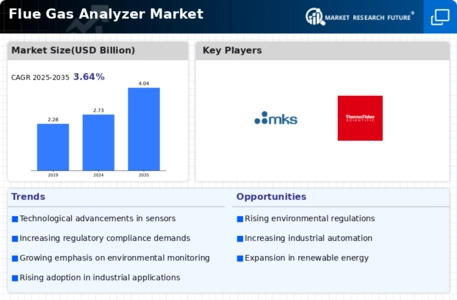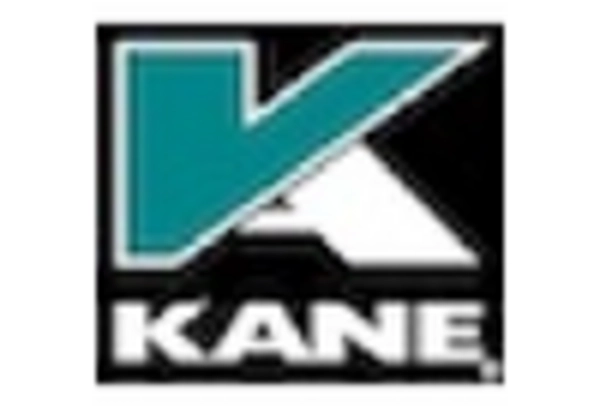Integration of Smart Technologies
The integration of smart technologies is transforming the Flue Gas Analyzer Market. The advent of the Internet of Things (IoT) has enabled flue gas analyzers to connect seamlessly with other industrial systems, facilitating real-time data exchange and analysis. This connectivity allows for enhanced monitoring and control of emissions, leading to improved operational efficiency. Furthermore, smart analyzers can provide predictive insights, helping organizations to anticipate maintenance needs and reduce operational costs. Market data indicates that the adoption of smart technologies in flue gas analysis is expected to grow at a rate of around 7% per year. This trend reflects a broader shift towards digitalization in industrial processes, positioning the Flue Gas Analyzer Market as a key player in the future of environmental monitoring.
Technological Advancements in Measurement
Technological advancements are playing a pivotal role in shaping the Flue Gas Analyzer Market. Innovations in sensor technology and data analytics are enhancing the accuracy and efficiency of flue gas measurements. Modern analyzers are equipped with advanced features such as real-time monitoring, remote access, and automated reporting, which streamline operations for end-users. The integration of artificial intelligence and machine learning algorithms is also enabling predictive maintenance, reducing downtime, and optimizing performance. According to recent data, the market for advanced flue gas analyzers is expected to witness a substantial increase, with a projected growth rate of approximately 6% annually. These technological improvements not only enhance measurement capabilities but also contribute to better compliance with environmental regulations, further propelling the Flue Gas Analyzer Market.
Growing Industrialization and Urbanization
The Flue Gas Analyzer Market is significantly influenced by the trends of growing industrialization and urbanization. As countries continue to develop, there is an increasing demand for energy and industrial products, leading to higher emissions. Industries such as manufacturing, power generation, and construction are expanding rapidly, necessitating the use of flue gas analyzers to monitor emissions effectively. Data suggests that regions experiencing rapid industrial growth are likely to see a corresponding increase in the demand for flue gas analyzers, with projections indicating a market growth rate of approximately 5% in these areas. This trend underscores the importance of emission monitoring in maintaining air quality and adhering to environmental standards, thereby driving the Flue Gas Analyzer Market.
Regulatory Compliance and Environmental Awareness
The Flue Gas Analyzer Market is experiencing a surge in demand due to increasing regulatory compliance requirements. Governments worldwide are implementing stringent regulations to control emissions from industrial processes and power generation. This regulatory landscape compels industries to adopt flue gas analyzers to monitor and report emissions accurately. For instance, the European Union has set ambitious targets for reducing greenhouse gas emissions, which necessitates the use of advanced monitoring technologies. As a result, the market for flue gas analyzers is projected to grow significantly, with estimates suggesting a compound annual growth rate of over 5% in the coming years. This trend indicates that industries are prioritizing compliance and environmental responsibility, thereby driving the Flue Gas Analyzer Market forward.
Rising Awareness of Air Quality and Health Impacts
Rising awareness of air quality and its health impacts is a crucial driver for the Flue Gas Analyzer Market. As public concern over air pollution intensifies, there is a growing demand for accurate monitoring of emissions from various sources. This awareness is prompting industries to invest in flue gas analyzers to ensure compliance with health and safety regulations. Studies have shown that poor air quality can lead to significant health issues, which in turn drives regulatory bodies to enforce stricter emission standards. Consequently, the market for flue gas analyzers is expected to expand, with estimates suggesting a growth rate of around 6% annually. This trend highlights the critical role of flue gas analyzers in safeguarding public health and the environment, thereby reinforcing the importance of the Flue Gas Analyzer Market.

















Leave a Comment